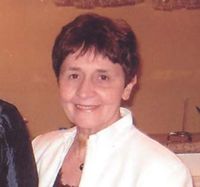 Wisdom 1:13-15; 2:23-24
Wisdom 1:13-15; 2:23-24
This passage is addressed to socially marginalised Jews inAlexandria in Egypt just a few decades before the birth of Jesus. Life, not death, is God’s doing, and the life they have is lasting, for they are made ‘in the image of God’s ‘eternity.’ The Greek notion of immortality is extended to the Hebrew understanding of righteousness or justice. If their righteousness is of God, it too will last.
2 Corinthians 8:7, 9, 13-15
Paul’s praise of the Corinthian community is a little ironic. He has had to remind them that their knowledge and eloquence are God’s free gift and no reason for boasting. The generosity of God is the basis of his appeal for generosity towards the suffering community in Jerusalem.
Mark 5:21-43
In Mark’s gospel, we often encounter a story within a story. In Mark 5:21-43, the frame consists of the two-part story of the desperately ill 12-year-old daughter of Jairus, a synagogue official. Jairus falls at the feet of Jesus in an attitude of reverence and pleads with him to come and lay hands on her. Jesus is clearly known as a healer, one who can ‘save’ life.
The passage closes with the girl’s seeming death and restoration to life. In between, we have the story of an older woman, also seriously ill, possibly with a gynaecological problem: she has been haemorrhaging for 12 years.
The stories are linked in many ways, first by the repetition of the number 12 – a symbolic number in a Jewish context. Both the young Jewish girl and the older Jewish woman are in need of the saving power of God mediated through Jesus the healer.
Jairus’ daughter does not speak for herself. Like all young women of that culture, ill or not, she is dependent on the voice of her father. The older woman comes tentatively ‘from behind’. She speaks, but only to herself, as she touches Jesus’ cloak and experiences healing in her body. She is finally shamed into telling all. Like Jairus, she falls at the feet of Jesus.
Both women, young and old, are ‘daughters’ ofIsrael. Both are restored to health, one on account of her parents’ faith, the other on account of her own faith. Jesus the healer has embraced and responded to the pain of a woman alone on the one hand and of a family (mother, father and daughter) on the other.